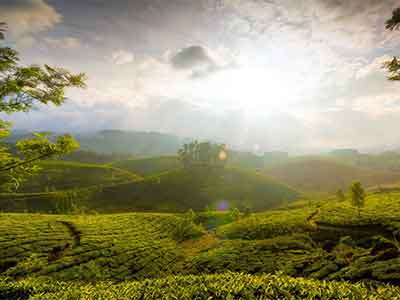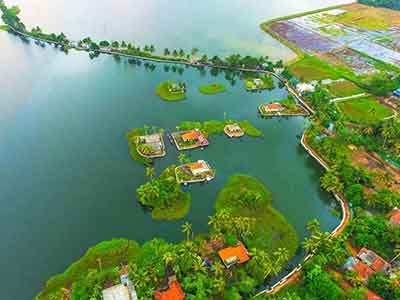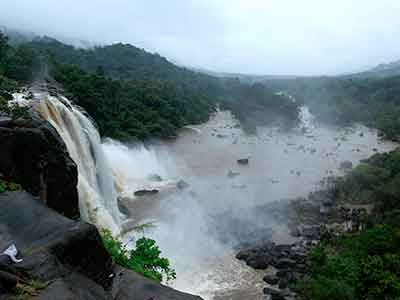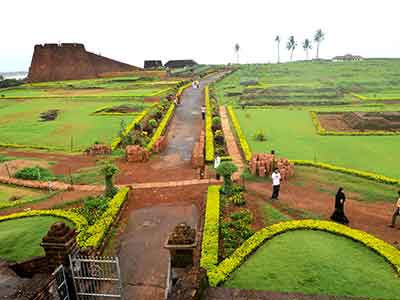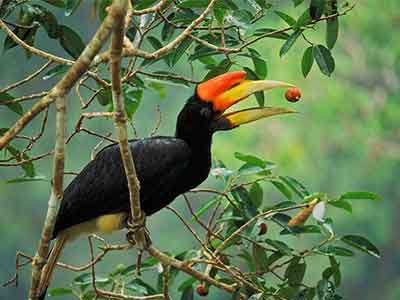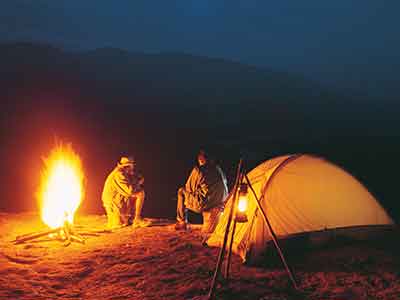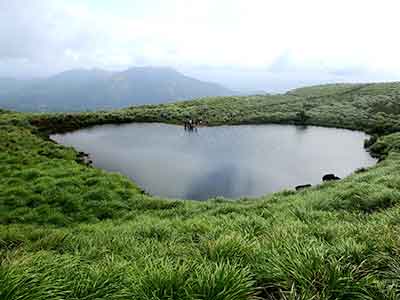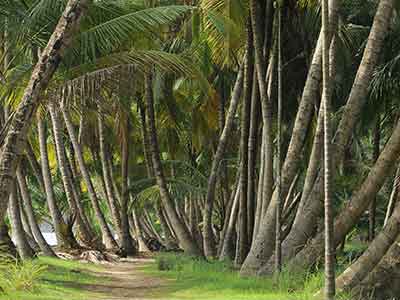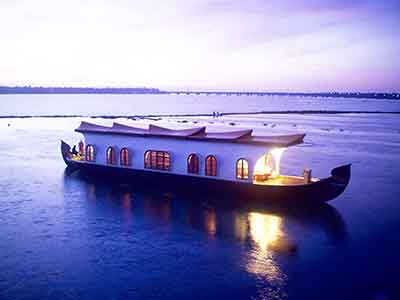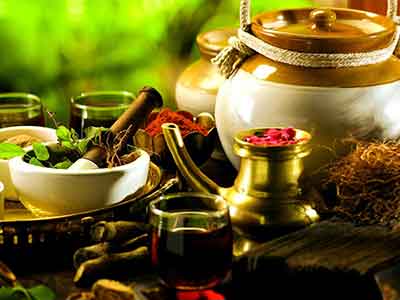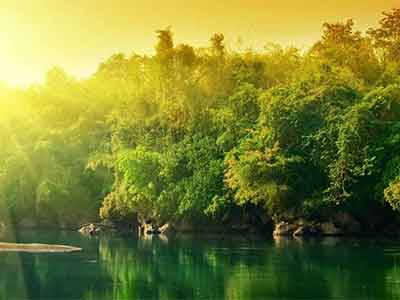Email: sales@travioholidays.in
Help: +91 98950 53303

The capital of Kerala and seat of the former Travancore kings, the city’s trading history dates back to around 1000 BCE when the ships of Solomon were said to have called at the port of Ophir (now Poovar) here for spices, ivory and sandalwood.
Towards the southernmost tip of the state and the country, Thiruvananthapuram is spread across seven hills and is today a modern city that combines ancient palaces and temples, contemporary software parks and engineering, wide avenues and lots of greenery. A popular tourist destination in itself, Thiruvananathapuram, is also the gateway to the famous international tourist beach in Kovalam.
Sree Padmanabhaswamy Temple
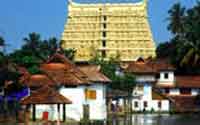
The Padmanabhaswamy Temple at the heart of Trivandrum is designed in the Dravidian style of architecture mostly associated with temples in the neighbouring state of Tamil Nadu. Quite similar to the Adikesava Perumal temple in Kanyakumari, the diety here, Padmanabha, is shown lying on the serpent ‘Anantha’ in the “Anantha-Sayanam”(eternal yogic sleep) posture.
The high walls of the temple contain a ‘gopuram’ (a monumental tower, usually ornate, at the entrance of a South Indian temple of the Dravidian style) believed to have been constructed in the 16th century and the Padmanabhaswamy temple is the recipient of great veneration by Hindus in Trivandrum as well as from pilgrims who throng here from other parts of India.
Horse Palace Museum
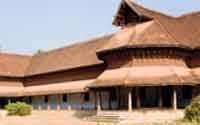
The ‘Puthen Malika’, also popularly referred to as ‘Kuthira Malika’ or ‘Mansion of Horses’ gets its name from the 122 horses carved into the wooden wall brackets that support the palace’s southern roof. A museum occupies a portion of the palace and displays numerous treasured possessions of the erstwhile Travancore royal family – thrones made entirely of elephant tusks, a quaint musical tree that produces eight different tones when tapped, Belgian and Italian mirrors, a Belgian harpoon!), crystal chandeliers, paintings, ornaments, musical instruments, and idols and sculptures made from white marble.
On the first floor of the building is a royal audience chamber, a library and an alcove where the great musician-king, Swathi Thirunal meditated while conceiving his compositions. Another room displays a portrait of a former king by the Russian painter, Svetoslav Roerich – an illusionary aspect to this painting is that the face and the shoes of the king in the portrait appear to turn towards the viewer as they move to different parts of the room.
Napier Museum
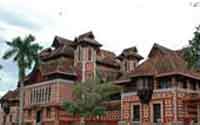
A popular landmark, the Napier Museum built in 1854 is an art and natural history museum designed in the Indo-Saracenic style with gothic roofs and minarets and ornamentation and a system of circulating air to cool the interiors. The museum and the Sri Chitra Art Gallery within the premises house a rare collection of archaeological and historic artifacts besides the work of artists Raja Ravi Varma and Nicholas Roerich, along with pieces of Mughal and Tanjore art. A Zoological garden built in 1857, the oldest in India, extends over 55 acres of the museum grounds.
Ponmudi
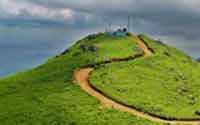
Nature at her very best – Ponmudi, a hamlet near Trivandrum, set in the tail end of the Western Ghat mountain, a tourist destination that is gaining increasing popularity with visitors who are nature lovers and a destination with numerous opportunities to hike and trek, for picnics and simply soak in nature’s beauty.
The Golden Valley near Ponmudi is lush with tropical vegetation and a profusion of wildlife – elephants, sambar, leopards, lion-tailed macaques and the Malabar grey hornbill. The Kallar River flows through the valley, pebbled and filled with fish. Visitors may also stop by at the Ponmudi Falls, an excellent picnic spot nearby and explore the Peppara Wildlife Sanctuary as well. And towering over this pristine landscape is Agasthyarkoodam, one of the tallest peaks in South India.
Padmanabhapuram Palace
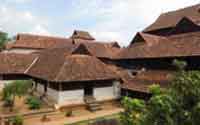
A stellar example of traditional Kerala architecture, the 16th century AD Padmanabhapuram Palace, fifty kilometers from Thiruvananthapuram, is a study in elegance – with intricate rosewood and teak ceilings carved with floral designs, splendid 17th and 18th century murals, window panes of colored mica, royal chairs with Chinese carving, a four-poster medicinal bed, Belgian mirrors and a vast floor of gleaming black obtained from a mixture of egg white, jaggery, lime, burnt coconut, charcoal and river sand. There are also enormous granite tubs to cool curd and buttermilk, large earthen urns for storing curds, an open air swimming bath, a granite dance hall, secret underground passages, and an outer cyclopean stone wall of massive irregular blocks fitted together without mortar.
Kanyakumari
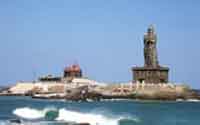
Kanyakumari, or Cape Comorin, is India’s land’s end – a confluence of the Arabian Sea, Indian Ocean and the Bay of Bengal. It was an important town during the ancient Tamil Sangam period, and over many centuries, a centre for art and religion and thriving trade and commerce.
The picturesque town is a vibrant mélange of sights and sounds – venerable temples, churches, beaches of different colored sand fringed by coconut groves and paddy fields reaching out to the foothills of the Western Ghat mountains.
A temple dedicated to the Goddess Kumari, gigantic memorials to Swami Vivekananda and the Tamil poet-philosopher-saint, Tiruvalluvar, the magnificent 100-year old Our Lady of Ransom Church are some of the sights to take in.
Watch some of the most spectacular sunsets in this part of the world from the beach. On particularly clear evenings of the full moon, the moon rises and the sun sets simultaneously over the sea.
Poovar
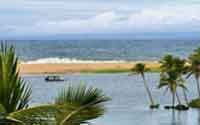
Pooovar is small coastal village, south of Trivandrum, with an attractive beach where the ships of King Solomon are said to have berthed to trade in sandalwood, ivory and spices. Poovar is one of the earliest Muslim settlements along the western coast of India and boasts a mosque that is 1400 years old. Nearby, the Neyyar River empties into the sea through a wide estuary.
Our Top Tour Packages in South India
The four states that constitute South India are composed of distinctive geographic regions - narrow plains that fringe peninsular South India beside the Arabian Sea and the Bay of Bengal with two mountain ranges running alongside and the rocky hardtop of the Deccan and fertile central plains.
